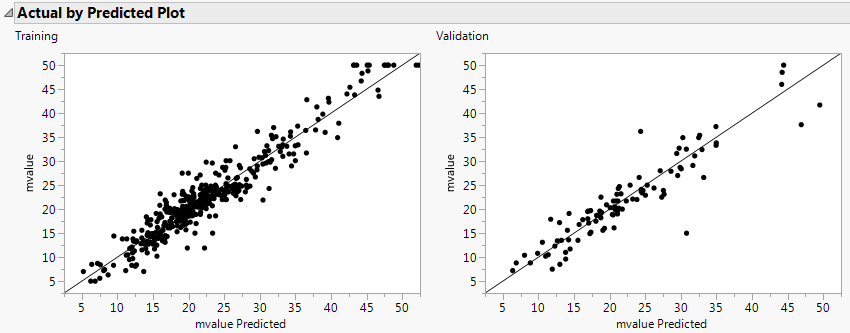This example uses the Boston Housing.jmp data table. Suppose you want to create a model to predict the median home value as a function of several demographic characteristics. Follow the steps below to build the neural network model:
|
1.
|
|
2.
|
|
3.
|
|
4.
|
|
5.
|
Click OK.
|
|
6.
|
Enter 0.2 for the Holdback Proportion.
|
|
7.
|
Enter 1234 for the Random Seed.
|
|
9.
|
Check the Transform Covariates option.
|
|
10.
|
Click Go.
|
Figure 3.6 Neural Report
The R-Square statistic for the Validation set is 0.913, signifying that the model is predicting well on data not used to train the model. As an additional assessment of model fit, select Plot Actual by Predicted from the Model red-triangle menu. The plot is shown in Figure 3.7.
Figure 3.7 Actual by Predicted Plot
To get a general understanding of how the X variables are impacting the predicted values, select Profiler from the Model red-triangle menu. The profiler is shown in Figure 3.8.
Figure 3.8 Profiler
Some of the variables have profiles with positive slopes, and some negative. For example, rooms has a positive slope. This indicates that the more rooms a home has, the higher the predicted median value. The variable pt is the pupil teacher ratio by town. This variable has a negative slope, indicating that the higher the pupil to teacher ratio, the lower the median value.


